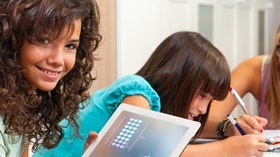Homepage
•
Learning Library
•
Blog
•
Middle school students dispel technology myths
Expand breadcrumbs
Expand breadcrumbs
- Learning Library
- Blog
- Middle school students dispel technology myths
- Homepage
- •
- Learning Library
- •
- Blog
- •
- Middle school students dispel technology myths
Middle school students dispel technology myths
By Angelia Fleming
October 26, 2015








